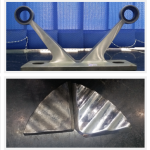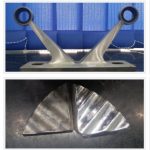A Detailed Overview of Cast Iron and its Properties
Iron is found in the composition of various metal alloys. Without it, you cannot manufacture metals like stainless steel, superalloys, carbon steel and more. It is a ferrous alloy with more than 2% carbon in it. Though some alloys have any percentage of carbon from 2% to 6.67%, it is usually between 2% to 4% only. You can consult the alloy cast iron casting manufacturer for good quality, long-lasting products.
What is Cast Iron?
Cast iron refers to a family of metal alloys where the primary alloying element is iron. To be considered a cast iron, it should have over 2% carbon. Besides, it also has small amounts of other alloys like silicone and manganese. These additional elements modify the properties of cast iron, as per requirement.
Cast iron does not fall into one group. Rather there are four major subtypes.
? Gray Cast Iron: It has flakes of graphite which improve its machinability factor compared to other cast iron.
? Ductile Cast Iron: This contains nodules of graphite, making it more ductile than other forms of cast iron. Besides, it also has excellent strength properties.
? Malleable cast iron: This is white cast iron treated with heat to transform iron carbides into graphite nodules. It has similar properties to ductile cast iron.
? White Cast Iron: This has higher amounts of iron carbides, making it brittle. However, it has a higher degree of wear resistance.
The Process of Making Cast Iron
Experts do cast iron manufacturing following certain procedures, which is how it gets the name. At first, they heat the iron ore in the furnace until it becomes molten. Then, they cast the molten metal, thus allowing it to harden. They melt the cast iron ingots into a final mould. During remelting, the cast iron may have other metallurgical modifications made by introducing alloying elements or performing heat treatment procedures. At times, the cast iron falls into certain specifications of the four groups mentioned above.
At its molten state, cast iron has better fluidity than steel. It has a low melting temperature. These two attributes make it ideal for the casting process. Improvement in technology has further made it suitable for manufacturing and forming steel.
Applications of Cast Iron
Cast iron fits abundant applications that need resistivity to abrasion and high hardness. It is cost-effective because of the basic alloying element and less requirement for machining. Cast iron is used for the manufacture of –
• Machinery
• Disc Breaks
• Housings
• Chains
• Mining Equipment
• Decorative Architectural pieces
• Sprockets
• Engine Blocks
Consult experts at Houston India Private Limited for high engineered alloy cast iron casting products. We supply products across industries ensuring reliability and lasting features. We maintain quick and prompt delivery and strictly follow industry standards. Visit the website for more information.




